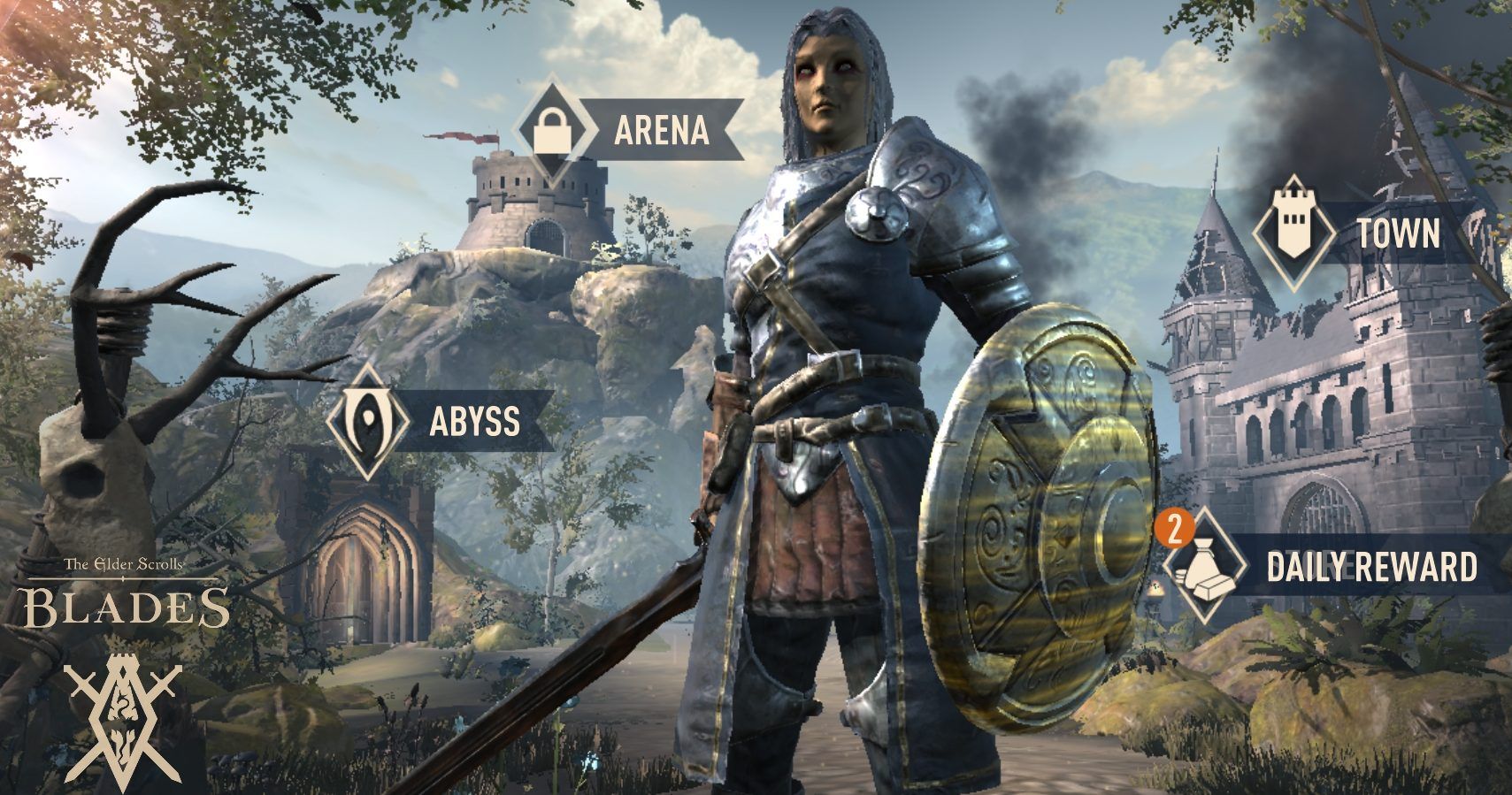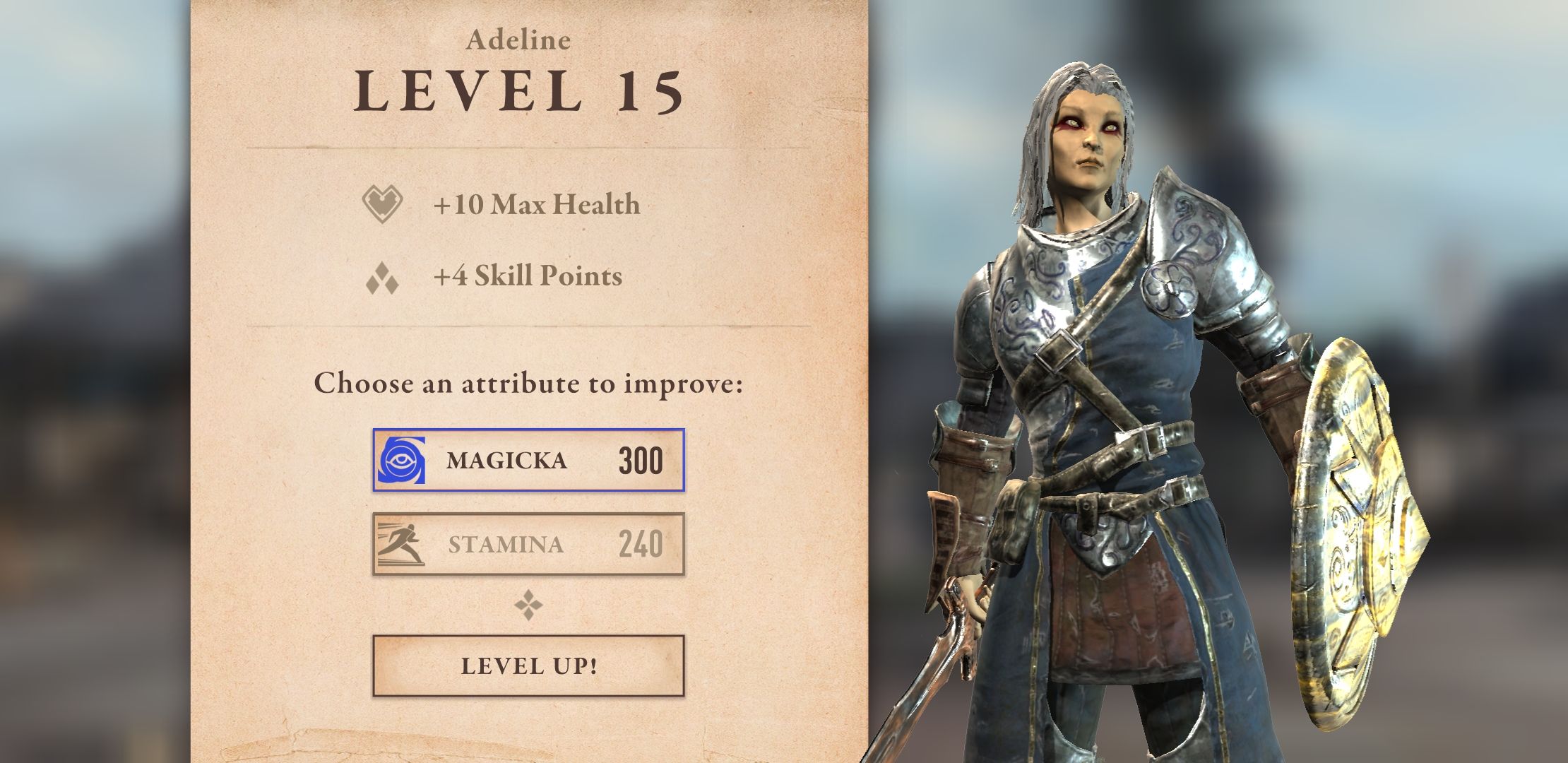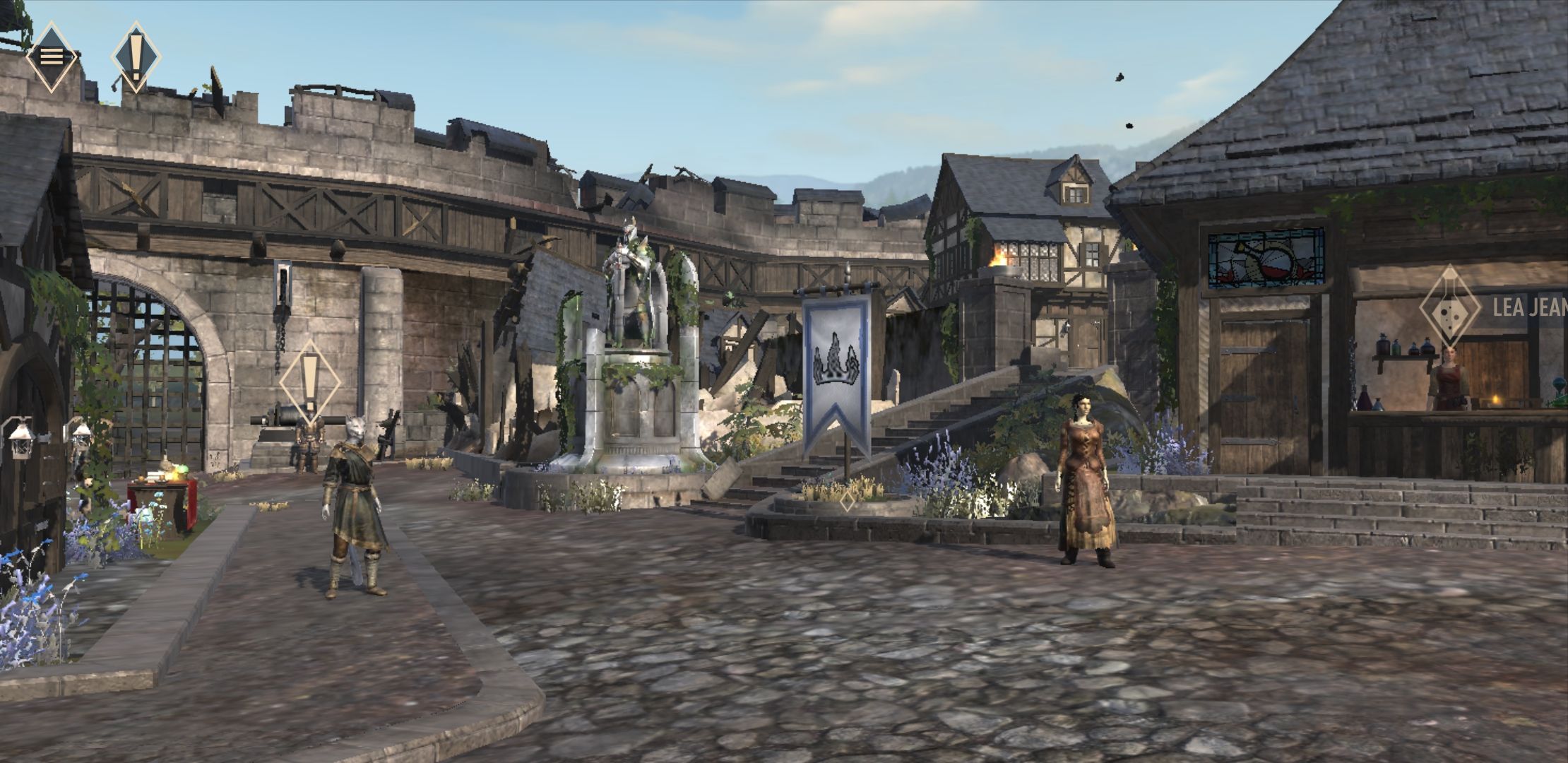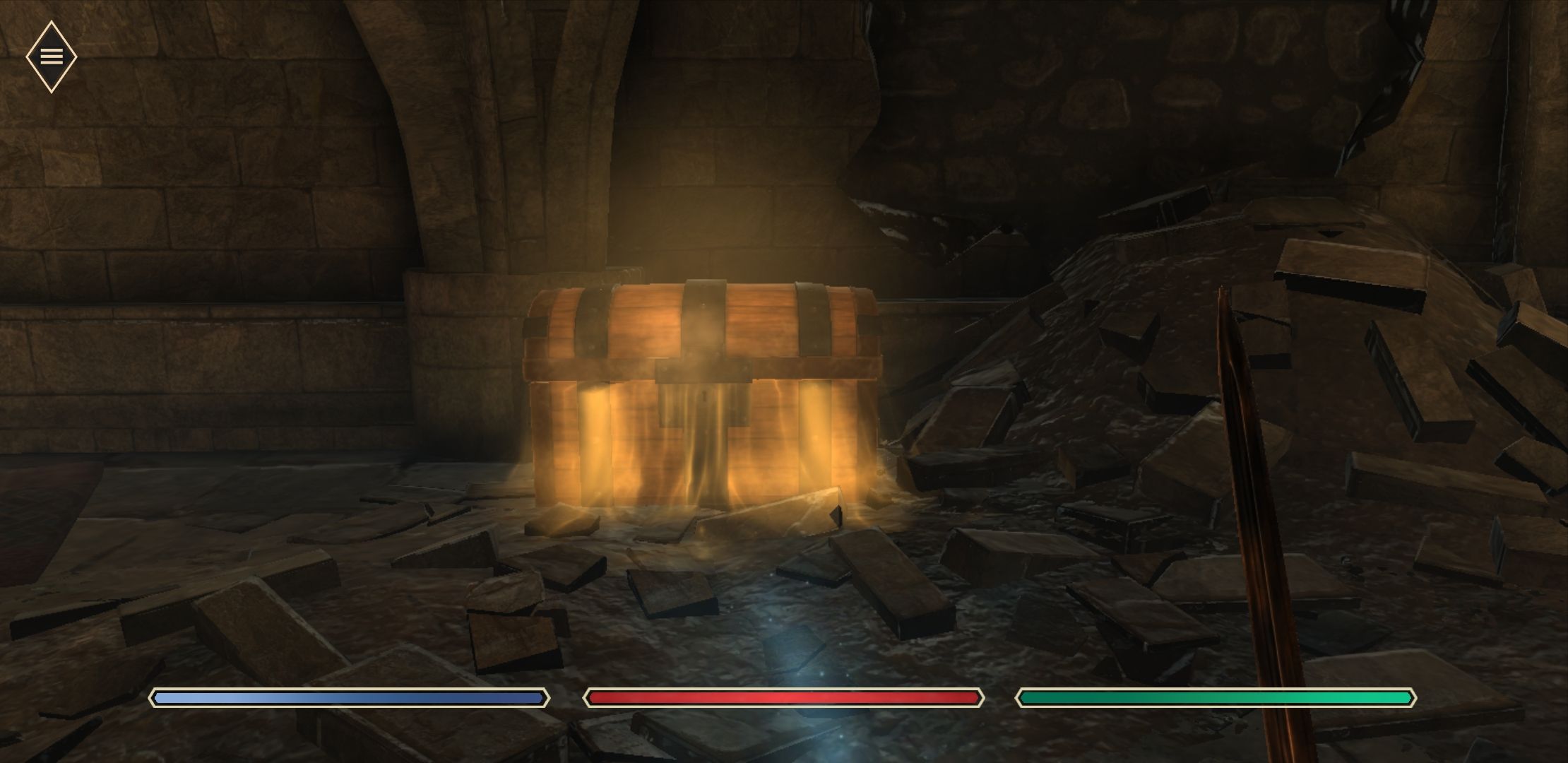Despite a less than warm welcome to the mobile platform, The Elder Scrolls: Blades has done a commendable job in consolidating the expansive world of Skyrim. In doing so, a few notable open-world features were necessarily cut in order to maintain the overall splendor of an Elder Scrolls title. To compensate for this loss, Bethesda incorporated new city-building features for a fresh take on the popular franchise.
Blades upholds the standards of a true Elder Scrolls installment, delivering beautiful graphics and a solid storyline, easing players into the new style of gameplay. The idea of Bethesda making a 'city builder' styled Elder Scrolls title was cringe-worthy to many fans, but have no fear! Blades did not go the route of other popular franchises, like Final Fantasy with their city building siege strategy title Final Fantasy XV: New Empire. Instead of stripping the game down to fit the usual mobile city building format, Blades makes a style of its own, combining city building with the first person playstyle we know and love from the other Elder Scrolls titles.
The storyline smoothly transitions players from the opening 'quest', to what they quickly discover to be their character's home town. A town that has suffered a great fire and must now begin to rebuild. At first, some players may not even realize the drastic cut to the open world. Simple aspects like selecting a 'Job' or 'Quest' transports the player directly to the dungeon, making for a seamless transition from location to location, but also cuts back greatly on the power and data required for a true open-world experience. In Blades, players retain the freedom to wander their town and explore dungeons for loot, which helps to maintain the illusion of an open world. Though players may not wander the wilds aimlessly, the loot acquired within the dungeons and from completing jobs or quests is quite sufficient. Rewards earned go towards character skill building or upgrading the town in various ways. With the freedom to craft, enchant, and upgrade various items and gear, it's fairly easy to forget the world is not as open as some may have liked.
Though many mechanics were simplified, this was necessary to have such an expansive game run smoothly on a mobile platform. Thankfully the developers did not have to compromise much at all on the stunning graphics and immersive gameplay that fans have come to expect from The Elder Scrolls titles. Overall, they have done a commendable job consolidating this classic title to fit mobile devices while doing their best to maintain the allure of console gaming; it certainly succeeds in 'soothing the itch'!




